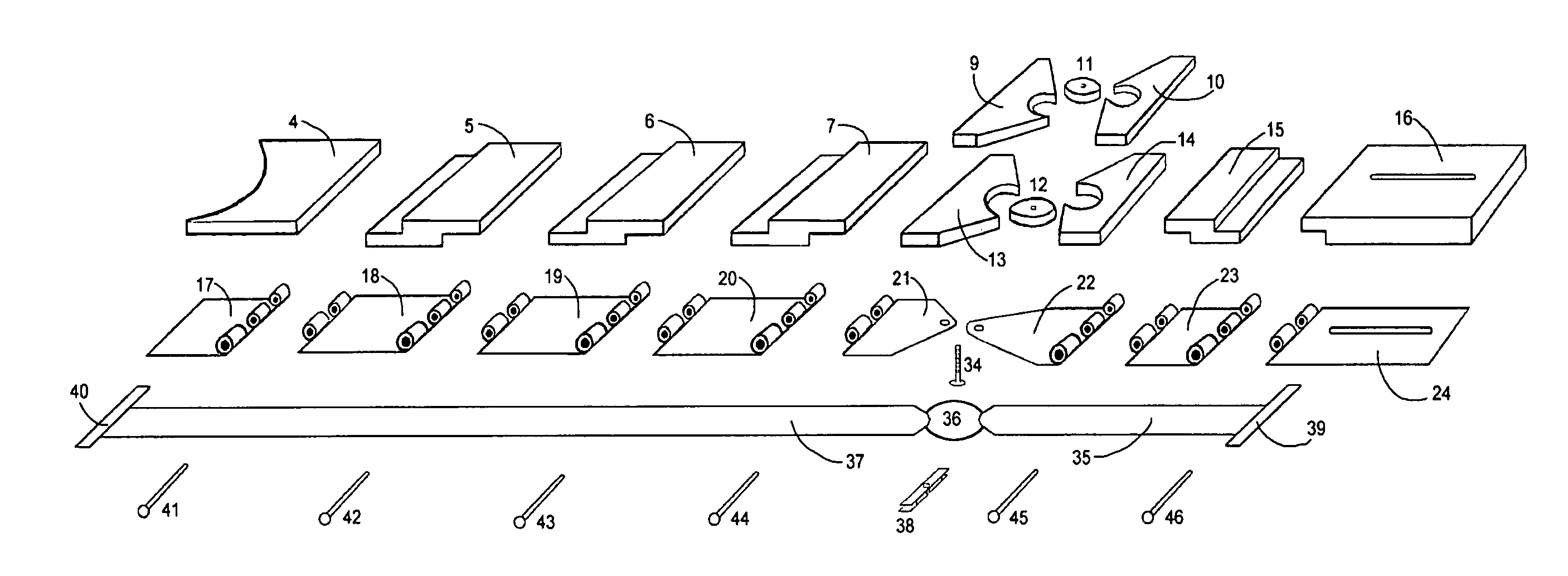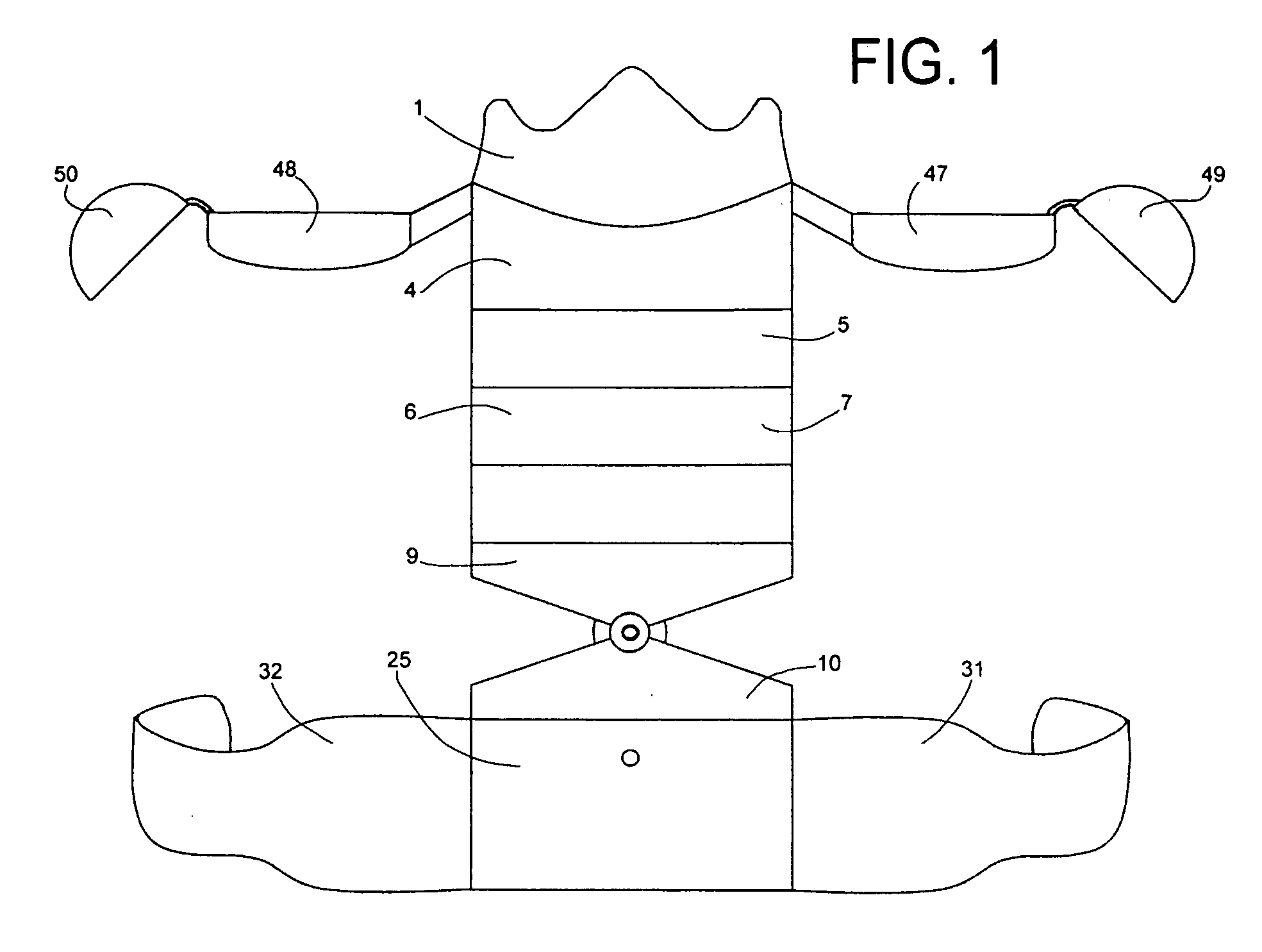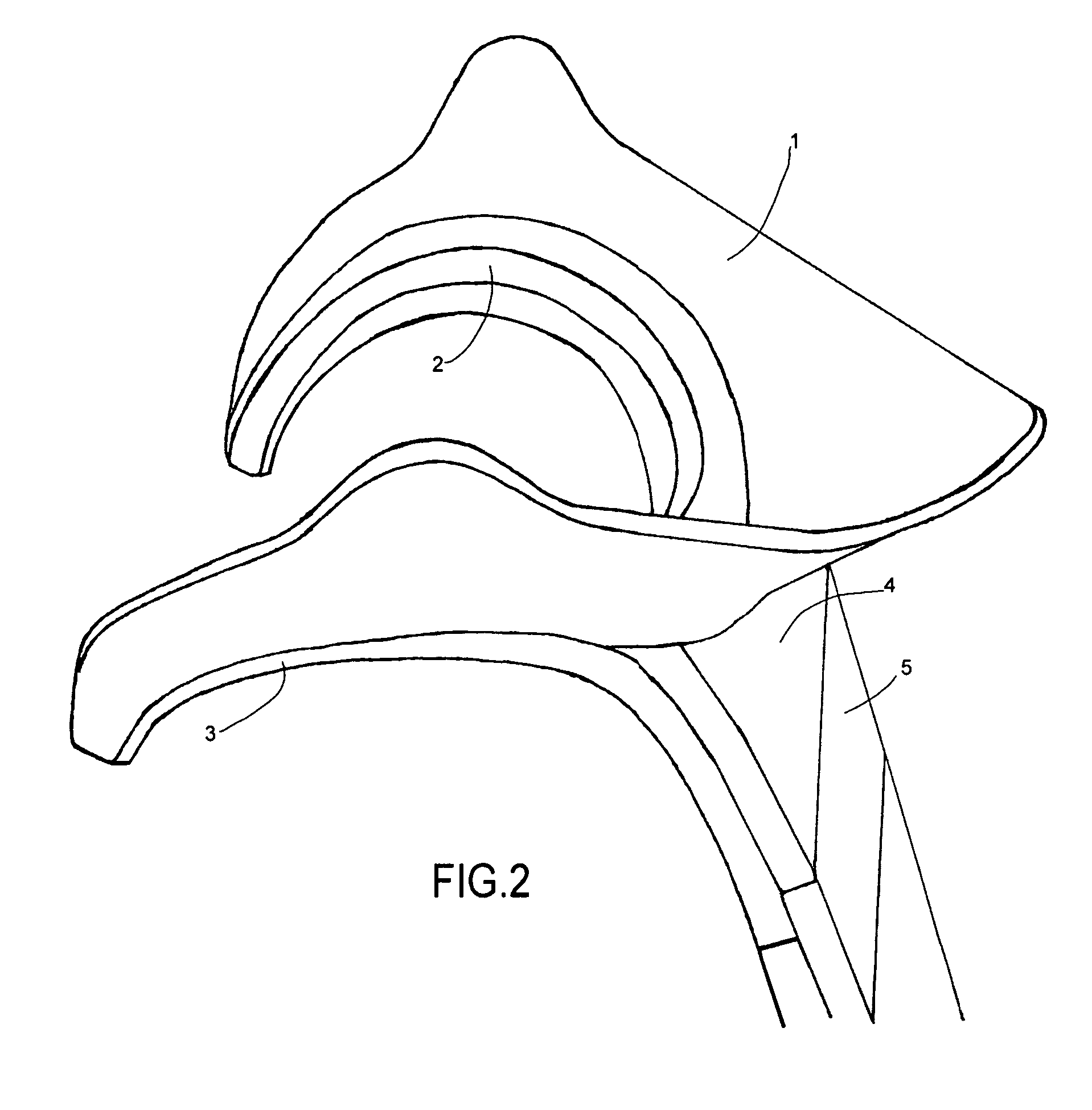Wearable spinal protective apparatus
a protective device and wearable technology, applied in the field of wearable spinal protective devices, can solve the problems of blunt force trauma protection would be minimal, and not providing total spinal column coverage or cervical spine or shoulders coverage, etc., to achieve simple padding, prevent hyperextension of the spine, and improve the effect of design engineering
- Summary
- Abstract
- Description
- Claims
- Application Information
AI Technical Summary
Benefits of technology
Problems solved by technology
Method used
Image
Examples
Embodiment Construction
[0048]The preferred embodiment of this invention relates to a wearable spinal protection device, this device or apparatus protects the wearer in all ways that corresponds to the major causes of spinal injury that can result in accidents at high velocity activities. This wearable spinal protection apparatus protects against blunt force trauma the full length of the spinal column from cervical to lumbosacral vertebrae. This wearable spinal protection apparatus protects against all forms of hyperextension of the spinal column. This wearable spinal protection apparatus protects against axial compression of the cervical spine region of the neck. This wearable spinal protection apparatus protects against whiplash of the neck. This wearable spinal protection apparatus protects against side angle whiplash of the neck. This wearable spinal protection apparatus protects against twisting injuries of the spinal column. This wearable spinal protection apparatus has advantages that will be most r...
PUM
 Login to View More
Login to View More Abstract
Description
Claims
Application Information
 Login to View More
Login to View More - R&D
- Intellectual Property
- Life Sciences
- Materials
- Tech Scout
- Unparalleled Data Quality
- Higher Quality Content
- 60% Fewer Hallucinations
Browse by: Latest US Patents, China's latest patents, Technical Efficacy Thesaurus, Application Domain, Technology Topic, Popular Technical Reports.
© 2025 PatSnap. All rights reserved.Legal|Privacy policy|Modern Slavery Act Transparency Statement|Sitemap|About US| Contact US: help@patsnap.com



